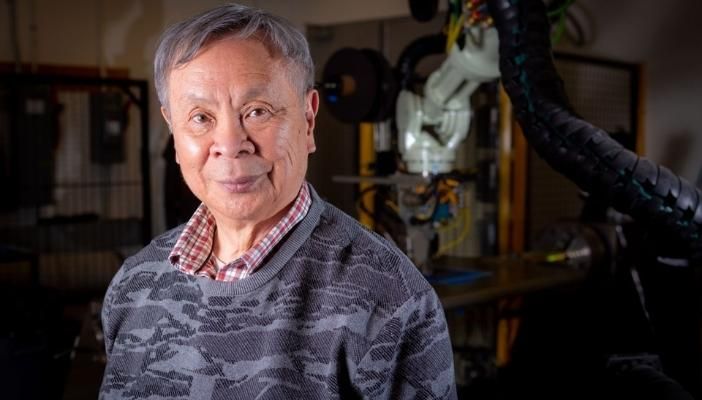By Dr. Suong Van Hoa, professor at the department of Mechanical and Industrial Engineering at Concordia University
During the last 43 years I have been working with composites on the analysis, design, manufacturing and development of new materials and structures across several sectors including aerospace. I have been at Concordia University in Montreal, Canada since 2006.
My latest work uses a new manufacturing technology, 4D printing in an interesting way to make complex composite structures that can be used in aircraft. The structure we have made first at Concordia is a morphing wing that can change its shape during flight. We have tested it and shown it is
suitable for use in up to small or medium sized UAVs (unmanned aerial vehicles).
4D printing is like 3D printing, except you deposit different materials at different locations, which have different kinds of reactions. After you have deposited the materials on a flat surface you subject them to an external stimulus, such as heat or moisture, creating different effects in the materials.
The morphing wing was produced by placing a quasi-isotropic layer in the center of the composite structure. We stacked the materials, compacted them and then cured it at 180˚C (356˚F). The temperature change caused the flat stack to turn into a complex curved shape that is stiff, but not brittle. Usually, engineers want to avoid this kind of effect, an isotropic composite layer is easier to use. But in this case where we want to change the shape, I took advantage of the anisotropy to create the curved shape within the layers. I looked at a disadvantage as an advantage.
The result is a wing which has a uniform curvature sandwiched between its upper and lower surfaces. The structure is both strong and flexible enough to support a 20% deformation. The curvature depends on the thickness. With the addition of a mechanism in the airframe the shape of the wing could be bent during flight to provide control. The manoeuvrability would be like that seen in birds or insects – quick changes in directions would be possible. The flap on the trailing edge would be removed, instead you can change the whole wing shape to adjust the flight path.
To create a shape like this would normally require a curved mould and a complex manufacturing process. It would not be possible to do this with current composite technology. We used an automotive fiber placement machine and carbon epoxy in a continuous process, instead of the usual soft plastic a 3D printer uses. The wing was tested in the lab by fixing it at one end and deforming it by adding loads with weights.
The next step is to conduct wind tunnel testing to characterize the aerodynamics of the wing when it is pulled into different shapes. We could then assess how much control it would provide an aircraft. We are looking for industrial partners to take the development of the wing forward. A company could complete the wind tunnel testing and industrialize the manufacturing process we have already done quickly.
There is not a great deal of development left, the piece we have already made is around a third of the size of the wing. This research offers a new way of controlling UAVs and small and medium-sized aircraft with a wing that is simpler, faster and easier to manufacture than existing methods.





